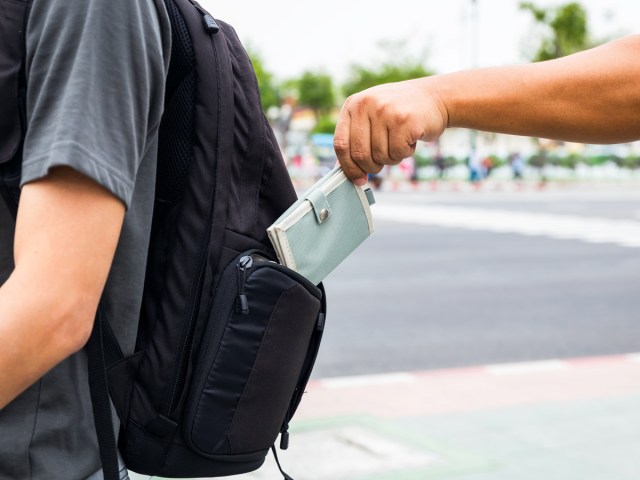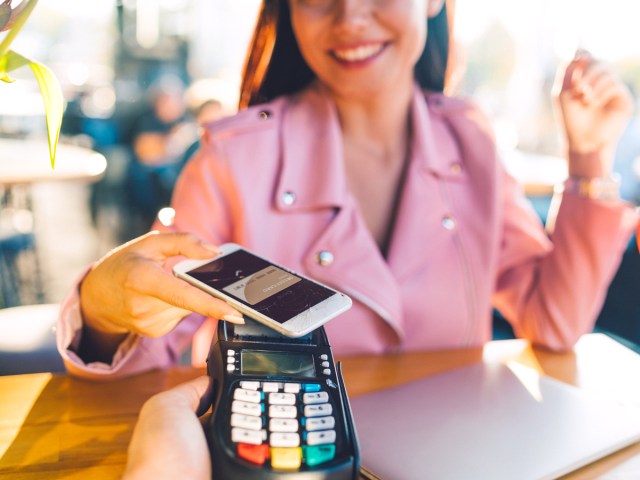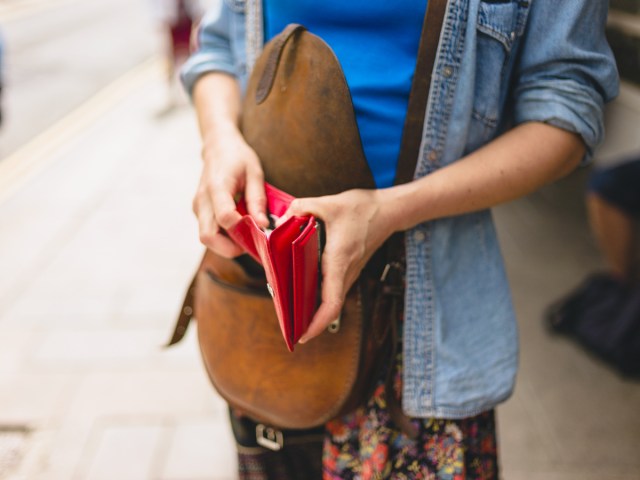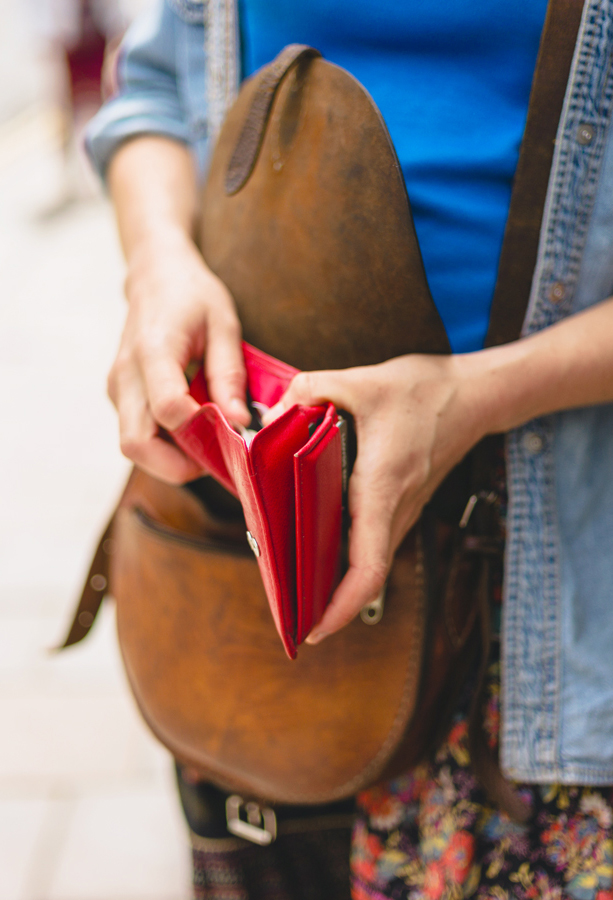On a vacation, sometimes the last thing on our minds is protecting our belongings. Your passport, phone, and wallet — likely within easy reach in your purse or back pocket — become easy targets for thieves while you’re deep in conversation, fumbling with a map, snapping a photo of iconic sites, or trying to decipher train timetables. Pickpocketing is already a cause for concern among travelers, but perpetrators these days can also use technology to steal private information without so much as brushing your shoulder. Luckily, there are ways to protect yourself from this form of crime by investing in an RFID-blocking wallet. Find out what it is and why you might want to bring one on your next trip.
What Does RFID Stand For?

RFID stands for radio frequency identification, a technology that uses radio waves to identify objects or people. Even without physical contact, an RFID scanner can read information stored within RFID tags contained in wireless devices, credit cards, or debit cards from up to 20 to 30 feet away.
These scanners capture information about an object’s shape, size, weight, color, and other attributes before sending these details to a computer program via radio waves. RFID technology has been used since the 1970s, and — in the right hands — is mostly used in employee identification cards, highway toll tags, and car keys.
What Kind of Information Is Vulnerable?

An RFID tag can hold up to 64 bytes of data, which can, unfortunately, be read by any kind of RFID scanner. The information on this “tag” may include your name, ID number, or other personal information, such as your real-time location.
More recently, RFID chips have been used in debit cards and credit cards — allowing thieves to read them without being scanned through a machine. While the chip is intended to make the transaction process easier, it can pose more of a risk.
How Does an RFID-Blocking Wallet Work?

Using an electromagnetic shield, an RFID-blocking wallet keeps your contactless cards safely stored and prevents credit card theft. RFID scanner signals can’t read the tags inside your cards when they are in this type of wallet — ensuring that this information remains safe. Most of the time, these wallets are lightweight and can hold many cards at once, so they’re practical as well as protective. RFID-blocking wallets are also relatively affordable and come in a variety of styles, materials, and colors.
The Bottom Line

It’s never a bad idea to be prepared for a worst-case scenario, but the good news is that many credit card companies and banks have already started issuing cards with chips that are not RFID-capable. Many contactless cards are also encrypted so that they only transmit securely encrypted information.
It’s also not highly likely a thief will go through the trouble of using such devices to obtain private information when it is often easier to access through internet scams. Still, there isn’t any harm in giving yourself that extra layer of protection. After all, the last thing you want to worry about on vacation is reporting bank fraud.
Note: All featured products and deals are selected independently and objectively by the author. Daily Passport may receive a share of sales via affiliate links in content.
More from our network
Daily Passport is part of Inbox Studio, which publishes content that uplifts, informs, and inspires.
















